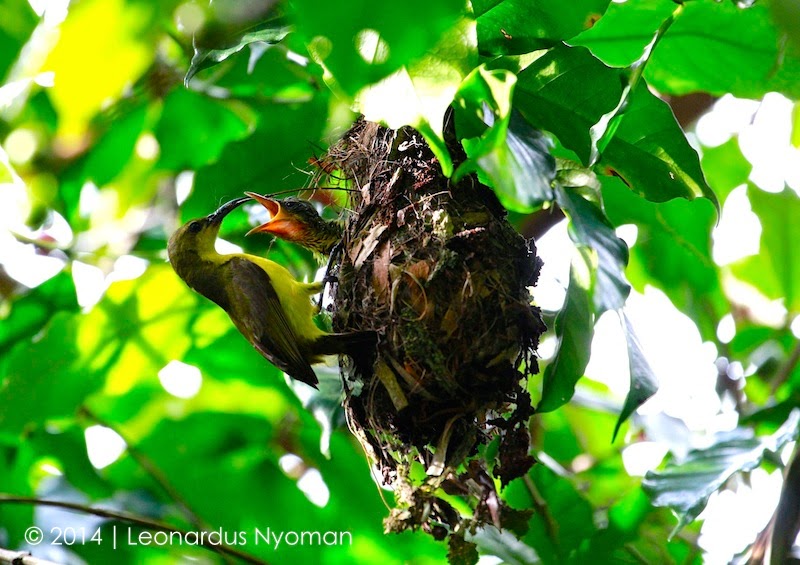The Olive-backed Sunbird, Cinnyris
jugularis, also known as Yellow-bellied Sunbird and formerly Nectarinia
jugularis, is an Asian sunbird.
Diet / Feeding
The sunbirds are a group of very small
Old World passerine birds which feed largely on nectar, although they
will also take insects, especially when feeding young. Their flight is fast and
direct on their short wings.
Range / Distribution
The Olive-backed Sunbird is common
across southern China to the Philippines and
Malaysia down to northeast Australia.
Originally from mangrove habitat, the
Olive-backed sunbird has adapted well to humans, and is now common even in
fairly densely populated areas, even forming their nests in human dwellings.
Description
They are small songbirds, at most 12cm
long. The underparts of both male and female are bright yellow, the backs are a
dull brown colour. The forehead,
throat and upper breast of the adult male is a dark, metallic blue-black.
Breeding / Nesting
The birds mate between the months of
April and August. Both the male and the female assist in building the nest
which is flask-shaped, with an overhanging porch at the entrance, and a trail
of hanging material at the bottom end.
After building the nest, the birds
abandon the nest for about a week before the female returns to lay one or two
greenish-blue eggs. The eggs take a further week to hatch. The female may leave
the nest for short periods during the day during incubation.
After the chicks have hatched, both male
and female assist in the care of the young, which leave the nest about two or
three weeks later
Photography by Leonardus Nyoman
www.FloresExoticTours.com.






